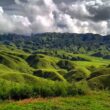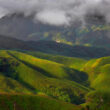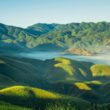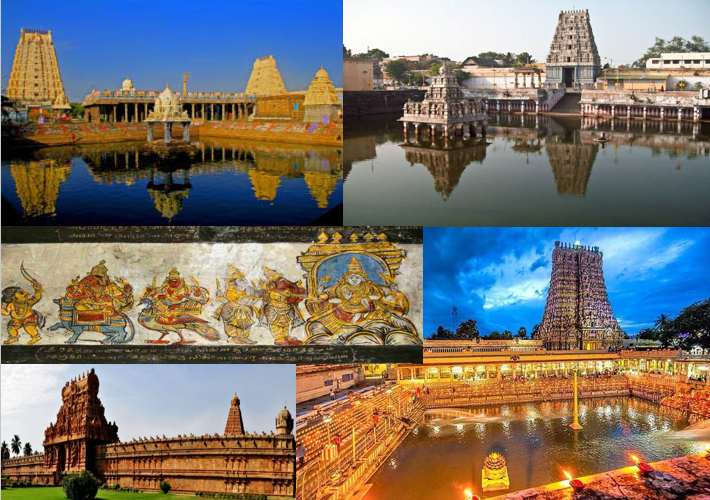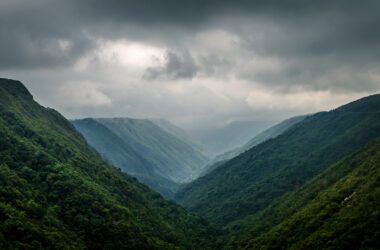Buddhist Circuit Bihar: Bihar is the land where Gautam Buddha began his search for answers to human suffering and attained enlightenment. The famous site of Buddha’s spiritual enlightenment under the Mahabodhi tree is now occupied by the Mahabodhi Temple, which attracts Buddhist pilgrims and travelers from all over the world. This temple complex has also been declared a World Heritage Site by UNESCO. The Buddhist circuit is a trail of the holy footsteps of Lord Buddha and important places of his life and teachings throughout Bihar.
Buddhist Circuit Locations
Mahabodhi Temple Complex at Bodh Gaya

Buddhist Circuit Bihar
The Mahabodhi Temple (literally: “Great Awakening Temple”), a UNESCO World Heritage Site, is an ancient, Buddhist temple in Bodh Gaya, marking the site where the Buddha attained enlightenment.
The temple stands for the Mahabodhi tree in the east. Its architectural effect is spectacular. Its crypt is 48 square feet and reaches its neck in the form of a cylindrical pyramid, which is cylindrical in shape. The total height of the temple is 170 feet and the top of the temple has chhatras which symbolize the sovereignty of Dharma.
Sujata Stupa

Buddhist Circuit Bihar
The Sujata Stupa is dedicated to Sujata, the maid of milk, who helped Buddha break his seven-year fast.
Sujata Stupa, Sujata Kuti Stupa or Sujata Garh, is a Buddhist stupa located in Senanigram (Bakraur) village, east of Bodh Gaya in the Indian state of Bihar. It is located directly across the river Falgu from the city of Bodh Gaya, where Gautam Buddha is said to have attained enlightenment. It is about 20 minutes walk from Bodh Gaya to Sujata Stupa. It was initially made in the 2nd century BC, as confirmed by dark brown polished wares and a punch-marked coin in a nearby monastery.
The stupa was dedicated to the milkmaid Sujata of Bakraur village, who is said to have fed milk and rice to Gautama Buddha at this place as he sat under a banyan tree, thereby ending his seven years of fasting and penance. was terminated. for him to gain knowledge.
The stupa was originally decorated with a pillar of Ashoka, which was partially excavated for building materials in the 1800s, then placed at Gol Pather Square in Gaya, and finally moved to Bodh Gaya in 1956. Given. The stupa was an integral part of the original landscape at Bodh Gaya and was reinforced and expanded several times over the centuries.
The Archaeological Survey of India conducted excavations in 1973-74 and 2001-06. An excavated plaque has an inscription dated 8th-9th century CE which reads that “Devapala Rajasya Sujata Griha” Devapala is being interpreted as a 9th-century king of the Pala dynasty, hence it means “King Devapala”. of Sujata House.” This suggests that the last phase of the construction of the stupa dates back to the time of Devapala in the 9th century AD, where Sujata lived.
Before the discovery of this inscription, it was thought that this stupa was dedicated to “Gandha-Hasti” “Scented Elephant” and hence was named “Gandha-Hasti Stupa”. This interpretation was based on a description made in the 7th century. Chinese pilgrim Hiuen Tsiang (in Buddhist records of the Western world) reported that when he crossed the river (Niranjana) and went to Bakrour, he encountered a stupa and a stone pillar at the site where the Gandhasti lived (of Referring to) the place where Buddha was reincarnated in a previous life as the offspring of a scented elephant)
Vishwa Shanti Stupa

Buddhist Circuit Bihar
Vishwa Shanti Stupa, also known as Shanti Pagoda. It is situated at an altitude of 400 meters in Rajgir, at the highest point of Ratnagiri hill, which gives divinity to its serene charm. Constructed entirely of marble, the stupa houses four golden statues of Lord Buddha, each representing the life span of his birth, enlightenment, preaching, and death. There is a ropeway that helps tourists to reach Vishwa Shanti Stupa atop Ratnagiri hill. Another way to reach this “stupa” is through a serpentine staircase.
Ashokan Pillar in Kolhua, Vaishali

Buddhist Circuit Bihar
Kolhua is a famous Buddhist excavation site which is located about 65 km northwest of Patna. Excavations have revealed the famous Ashoka Pillar with a lion statue on its top. The excavation also revealed many other articles related to Buddhism.
Emperor Ashoka had built the Lion Pillar at Kolhua. It is made of a highly polished single piece of red sandstone, which rises above the 18.3 m high bell-shaped capital. A life-size figure of a lion is placed on top of the pillar. There is a small pond here which is known as Ramkund. Situated next to a brick stupa at Kolhua, this pillar commemorates Buddha’s last sermon.
Buddha Relic Stupa in Vaishali

Buddhist Circuit Bihar
One of the most popular sites for Buddhists, this site preserves the holy ashes of Lord Buddha.
Buddha Relic Stupa, one of the eight parts of the mortal remains of Lord Buddha after attaining Mahaparinirvana, is one of the most revered sites for Buddhists and is preserved for the Archaeological Survey of India (ASI), about 55 km north of Patna. Located in the west in Vaishali district.
The Buddha Relic Stupa was built by the Lichchhavis in the 5th century BC as an earthen stupa. The stupa was later discovered by K.P. in Patna. Jaiswal Research Institute during 1958-1962. The relics excavated from the core of the stupa contained the sacred ashes of Lord Buddha mixed with earth, a piece of a conch shell, pieces of pearls, a thin gold leaf, and a copper punch-marked coin. The coffin was brought to the Patna Museum in 1972.
Kesaria Stupa

Buddhist Circuit Bihar
The stupa is said to be the tallest and largest Buddhist stupa in the world.
Kesaria Stupa is a Buddhist stupa in Kesaria, located 110 km from Patna in the East Champaran district of Bihar, India. The first construction of the stupa dates back to the 3rd century BC. The circumference of Kesaria Stupa is about 400 feet and its height is about 104 feet. The stupa is said to be the tallest and largest Buddhist stupa in the world and is one foot taller than the famous Borobodur Stupa in Java.
It was discovered through excavations by the Archaeological Survey of India in 1998. Exploration of the site reportedly began in the early 19th century, from its discovery in 1814 led by Colonel Mackenzie to General Cunningham’s proper excavation in 1861–62. The excavation was done in 1998 by Archaeologist KK Mohammed of the Archaeological Survey of India (ASI).
The original Kesariya Stupa probably dates back to the time of Ashoka (around 250 BCE), as the remains of a pillar capital of Ashoka were discovered there. The stupa mound may have been inaugurated in the time of Buddha as well, as it in many ways matches the description of a stupa built by the Lichchhavis of Vaishali to hold the alms bowls given by the Buddha.
Two great foreign travelers, Faxian (Fahian) and Xuan Zhang (Huan Tsang) visited the place in ancient times and have left interesting and informative accounts of their travels. He has written extensively about the unique geographical location, cultural vibrancy, and ancient heritage of saffron. During his journey from Vaishali to Kushinagar, Lord Buddha spent a night in Kesaria where he reportedly made some historical revelations. These were later recorded in a Buddhist Jataka story.
In ancient times, saffron was under the rule of Mauryas and Lichchhavis.
The discovery of gold coins bearing the seal of Kanishka, the famous emperor of the Kushan dynasty, further establishes the ancient heritage of Kesaria.
Recent excavations clearly show the massive stupa with a polygonal base of at least 6 stories with re-entry angles. There is a solid brick tower on top of a polygonal brick floor, which was originally 80 to 90 feet high.
According to Faxian, Lord Buddha announced his imminent death or nirvana just before leaving Vaishali to Kesariya. The overwhelmed Licchavi accompanied Lord Buddha to Kesariya and did not want to leave him. Lord Buddha then made them a big pond and said goodbye to the Lichchhavis by donating their alms-bowls to them at Deora. A pillar and a grand stupa were erected at this place by the Lichchhavis in the memory of Lord Buddha.
The present stupa dates back to the Gupta dynasty between 200 AD and 750 AD and may be associated with the 4th-century ruler Raja Chakravarti. The local people call this stupa “Devla”, which means “House of God”. Before its excavation, they believed that there is a temple of Shiva built by King Bhima inside it.
ASI has declared the Stupa as a protected monument of national importance.
Ruins of Vikramshila – Ancient Learning Centre

Buddhist Circuit Bihar
Situated in Antichak of Kahalgaon sub-division, 38 km from Bhagalpur, the ancient Vikramshila University was famous as a center of learning during the Pala dynasty. The university was founded by Raja Dharmapala.
Two things impressed Dharmapala and inspired him to set up a university; Firstly, the rocky hill around the confluence of the Kosi and Ganges rivers at Bateshwar place was not only a sightseeing attraction but also a popular tantric site. Second, the Ganges was here Uttar Vahini (flowing north) and as such, the place was a pilgrimage center, which attracted large crowds during Varasvardhan.
Read More About Bihar
Frequently Asked Questions About Buddhist Circuit Bihar
Q. What is Buddhist Circuit?
A – The Buddhist Circuit is a route that follows in Buddha’s footsteps from Lumbini in Nepal, where he was born, through Bihar in India where he attained enlightenment, to Sarnath and Kushinagar in Uttar Pradesh in India, where he made his first Taught and died.
Q. Is Bihar the land of Buddha?
A – Of all the Indian states, Bihar is most closely associated with the life of the Buddha, resulting in a route of pilgrimages known as the Buddhist circuit. Bodh Gaya is the place where Lord Buddha attained enlightenment, the Mahabodhi Temple marks the exact spot.
Q. What is Bihar in Buddhism?
A – The land of Bihar is considered to be the richest in terms of Buddhism as it showered the divine light of enlightenment on a young ascetic Siddhartha Gautama at Bodh Gaya under the Bodhi tree. Gautam Buddha attained enlightenment in Bodh Gaya, a town located in the modern-day district of Gaya.
Q. Which is an important place for Buddhists in Bihar?
A – Bodh Gaya is a religious site and pilgrimage site associated with the Mahabodhi temple complex in the Gaya district in the Indian state of Bihar. It is famous because it is the place where Gautama Buddha is said to have attained enlightenment (Pali: Bodhi) known as the Bodhi tree.
Q. What is the old name of Bihar?
A – In ancient times, Bihar was known as Magadha. It was the center of power, education, and culture. One of the greatest pacifist religions in the world, along with the Maurya Empire, Buddhism originated from Magadha. Bihari kingdoms such as the Mauryas and the Guptas integrated large parts of South Asia under one central rule.
Q. What is the famous food of Bihar?
A – Bihari cuisine includes litti chokha, a baked salty wheat flour cake filled with sattu (baked gram flour) and some special spices, which is served with roasted brinjal (eggplant) and brinjal bharta made from tomatoes.
Q. Why is Bihar famous?
A – Birthplace of two religions! Bihar is the cradle of the world’s two largest religions, Buddhism and Jainism. Oldest Hindu Temple! Mundeshwari Temple in Bihar is known as the oldest Hindu temple in India. This temple is dedicated to both Lord Shiva and his consort Shakti.
Q. What are Buddhist holy places?
A – The four major Buddhist pilgrimage sites apply to all Buddhists. These are Lumbini, Bodh Gaya, Sarnath, and Kushinagar.
Q. Why is the Mahabodhi Temple important?
A – The Mahabodhi Temple is a religious site in India that marks the spot where Buddha first attained enlightenment. Thus, it is one of the holiest sites in the whole of Buddhism. The first temple was built here around 260 BC by the Mauryan emperor Ashoka, who converted his empire to Buddhism.
Q. Who built the Mahabodhi Temple?
A – The first temple was built by Emperor Ashoka in the 3rd century BC, and the present temple dates back to the 5th or 6th century. It is one of the earliest Buddhist temples, built entirely of brick, that still stands from the end of the Gupta period in India.
Q. Who broke the Mahabodhi Temple?
A – In the 7th century AD, Shashanka, the ruler of Gowda (a kingdom extending to modern West Bengal and Bangladesh), again destroyed the tree. In any case, the present Mahabodhi Temple and some associated structures appear to have emerged in some form by the 5th or 6th century AD.
Q. What’s Inside the Mahabodhi Temple?
A – Mahabodhi Temple is one of the oldest brick temples in India. Inside the temple, there is a yellow sandstone statue of Buddha enclosed in glass in a temple. A descendant of the Bodhi tree, which is said to have lived next to the temple until the Buddha attained enlightenment.
Q. Who built Vishwa Shanti Stupa?
A – Shanti Stupa was the brainchild of Fuji Guruji, a Japanese Buddhist monk, after receiving the Jawaharlal Nehru Award for International Understanding by the Government of India in 1978. The pagoda is 28 meters high, made of white marble, and has a golden spire.
Q. Where is the world’s tallest Vishwa Shanti Stupa located in Bihar?
A – Vishwa Shanti Stupa is also known as Shanti Pagoda. It is situated at an altitude of 400 meters in Rajgir, at the highest point of Ratnagiri hill, which gives divinity to its serene charm.
Q. Where is Ashoka Pillar located?
A – The pillar is now located inside the Allahabad Fort, which is also the royal palace, built by Akbar during the 16th century at the confluence of the Ganges and Yamuna rivers.
Q. What does the Ashoka Pillar symbolize?
A – In both Buddhism and Hinduism, the pillar is a symbol of Dhuri Mundi (the axis on which the world revolves). The pillars and inscriptions represent the first physical evidence of Buddhism. The inscriptions emphasize Ashoka’s emphasis on Buddhism and support his desire to spread the religion throughout his kingdom.
Q. What is in the Ashoka Pillar?
A – One of the pillars of Ashoka, a pillar of finely polished sandstone was also erected on the side of the main archway at Sanchi. The bell-shaped capital consists of four lions, which probably supported the wheel of law.
Q. What happened to Buddha in Vaishali?
A – Buddha also gave his last sermon at Vaishali and declared his Nirvana here. After his death, Vaishali also organized the Second Buddhist Council. After the death of his parents at the age of 30, he renounced the world after fasting for two days under an Ashoka tree in Vaishali.
Q. Who built Kesaria Stupa?
A – Kesaria is a town in East Champaran district in the Indian state of Bihar. It is the site of a stupa built by the Mauryan king Ashoka.
Q. Where is Kesaria Stupa located?
A – Kesaria Stupa is a Buddhist stupa in Kesaria, located 110 km from Patna in the East Champaran district of Bihar, India.

